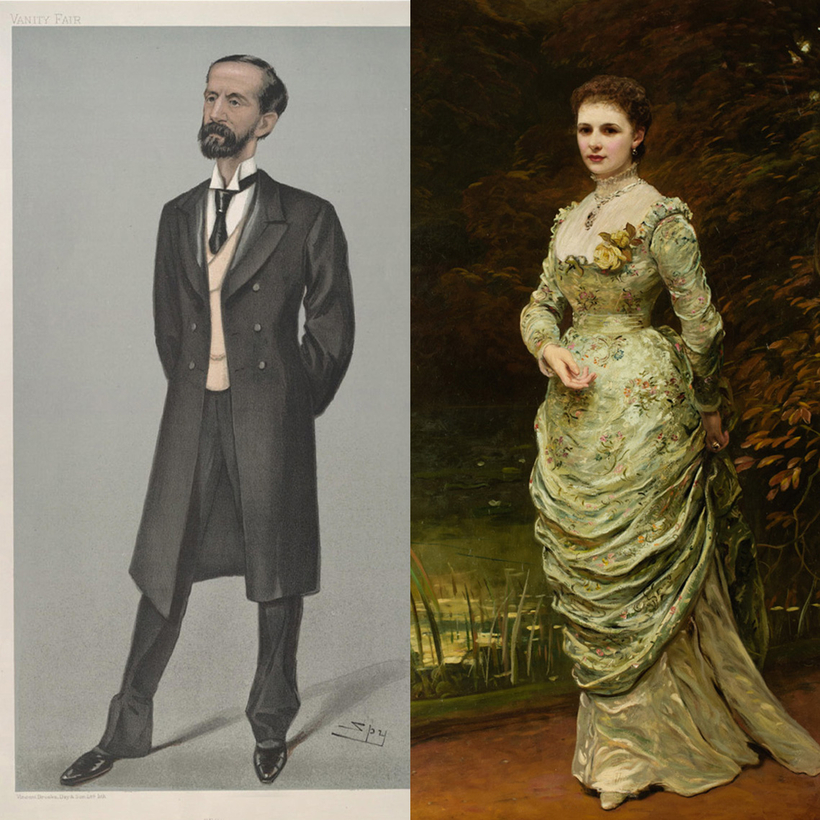It may be that John Hamilton-Gordon, the most honorable first Marquess of Aberdeen and Temair, twice the lord lieutenant of Ireland, and the seventh governor-general of Canada, is best known to us moderns, if at all, for writing what the Scotsman newspaper once described as “the world’s worst joke book.”
The volume in question, Jokes Cracked by Lord Aberdeen, from 1929, is so hilariously unfunny that it became a cult item among bibliophiles, eventually warranting re-publication in 2013. A sampling:
A lady remarked to a former Bishop of London on one occasion, “Oh! Bishop, I want to tell you something very remarkable. An aunt of mine had arranged to make a voyage in a certain steamer, but at the last moment she had to give up the trip; and that steamer was wrecked; wasn’t it a mercy that she did not go in it?”
“Well, but”—replied the Bishop, “I don’t know your aunt.”
Hey-oh! It’s not exactly the stuff of Eminent Victorians. But the pithy, mostly forgotten Lord Aberdeen was, in fact, quite eminent, the kind of well-starched 19th-century panjandrum who was pantheonic enough to be caricatured in the old British Vanity Fair and who, in photographic portraits, exudes the stiff reserve you’d expect from such an esteemed character, complete with requisite facial shrubbery and Macassar-oiled hair. Lord Aberdeen, it turns out, was no joke.

He was the grandson of a prime minister, a trusted intimate of William Gladstone’s, a Liberal stalwart, a kind and wise governor of both Ireland and Canada, and, most of all, a reformer nonpareil, one whose ardor for making the world a better place was equaled by a robust affection for real estate, both inherited and acquired. His greatest achievement may have been his choice of a spouse: the sweet-natured yet indomitable Ishbel Marjoribanks, who not only matched his passions but exceeded them, making the Aberdeens, following their 1877 wedding, a two-headed Victorian force to be reckoned with.
Dynamic Duo
In Fortune’s Many Houses, the veteran British television producer Simon Welfare spins out the do-gooder couple’s saga with brio and warmth, not to mention a rare degree of intimacy: he is married to the great-granddaughter of the marquess and marchioness, and has roamed the halls, galleries, and acreages where their story played out.
The Aberdeens’ trailblazing marriage-as-collaboration evokes other storied pairings marked by romance, equal partnership, and significant works—Victoria and Albert, Charles and Ray Eames, John and Yoko. As one contemporary chronicler noted, “It has been said of them that ‘never, perhaps, were husband and wife more thoroughly in sympathy with each other.’”
Ishbel, born into banking and brewing fortunes (her father, Lord Tweedmouth, was also a Liberal M.P.), grew up at Brook House, a gilded London mansion crammed with Fragonards and Hogarths, and at a massive Inverness-shire estate, Guisachan, known as the ancestral home of the golden retriever. There was enormous pressure to do well—and to do right. As a girl, Ishbel knitted for the poor and was required to make charitable donations out of her own pocket.
Ishbel was smitten with “Johnny,” as Aberdeen was known. He was 10 years her senior, with similarly high-minded proclivities and well-funded upbringing, shuttling between London and two grand properties in Aberdeenshire that were to become the couple’s own: a sprawling estate surrounding the town of Tarland and a Palladian pile known as Haddo House. Rising into adulthood, Johnny found himself, as Welfare notes, the owner of “the largest parcel of prime arable land in Europe” (excepting those belonging to monarchs).
Dinner at Haddo House, 1884, an Alfred Edward Emslie painting in the National Portrait Gallery, presents an indelible depiction of the life the Aberdeens led: Ishbel, in a tiara, is immersed in conversation with Gladstone at one end of a long table lined with guests in white-tie or gowns; Johnny sits at the far end. The walls are jammed tight with paintings in heavy gilt frames, and a Scottish piper—puffed cheeks, traditional garb—provides local color. What conversation could have been heard above the droning Highland din would surely have had to do with the latest causes, crusades, drives, benefits, and societies that Ishbel and Johnny instigated, supported, or endowed, the sheer number of which was staggering, from Irish Home Rule to the National Poultry Council.

The couple’s philanthropy—whether in service of health, housing, education, or women’s rights—had an impact. A campaign to boost Irish crafts brought income to famine-plagued counties and may be responsible, in a roundabout way, for the Irish-linen shirts and Aran sweaters in our closets today. After they launched a hygiene-awareness blitz to combat tuberculosis (see masks and handwashing, circa 2020), the infection rate in Ireland plunged by a third. The duo were occasionally lampooned for their efforts, as Peter Pan creator J. M. Barrie did in a forgotten stage comedy.
But, as Welfare writes, Ishbel and Johnny “cared not a hoot if they risked the contempt of their peers by taking their campaigns to the slum dwellers of London, to the servants who skivvied below stairs in Scotland’s great houses, to the starving people of the Irish countryside, and far beyond to lonely settlers on the prairies of Canada and the sick of the goldfields in the Yukon.”
After they launched a hygiene-awareness blitz to combat tuberculosis (see masks and handwashing, circa 2020), the infection rate in Ireland plunged by a third.
What emerges in Fortune’s Many Houses is a teeming portrait of an era: the Aberdeens knew everyone and went everywhere, from their official postings in Dublin and Ottawa to odysseys on the Great Plains and sojourns in India. Along the way, there are cameos by the likes of Queen Victoria, Matthew Arnold, P. T. Barnum, Charles Stewart Parnell, Helen Keller, Oliver Wendell Holmes Sr., and even Granny, the world’s oldest sea anemone. (In 1887, the news of Granny’s death, at age 66, was kept out of the papers for two months so as to not put a damper on Victoria’s Golden Jubilee.) In addition to the parade of politicians and peers, there are Texas cowboys, unscrupulous American speculators, jewel thieves, assorted occultists, and the occasional roving evangelist, such as the handsome, boyish Henry Drummond, the Marjoe Gortner of his day. (Ishbel was besotted with him.)
The Aberdeens’ globe-trotting initiatives, as Welfare writes with typical concision, were “enlightened, innovative, and often expensive.” In fact, they were so expensive as to whittle the couple’s vast resources down to practically nothing, forcing them to sell off chunks of this or that property and cut loose the Old Masters. An attempt at a fruit plantation and jelly empire in British Columbia came to naught. In 1909, the couple endured tragedy when their winsome twentysomething son, Archie, was killed in a road accident. He had been courting Violet Asquith, the daughter of the prime minister (and eventually the grandmother of Helena Bonham Carter). When Johnny died, in 1934, his accounts totaled about £200. Ishbel lived another five years.

Thankfully, Welfare passes no pat judgments on the Aberdeens, who sought to redress the imbalances of society yet were unable to balance their own checkbooks. There are no snickering comparisons to today’s justice warriors or venture philanthropists. We’re left to ponder the great successes and the garish excesses. As Violet Asquith wrote of Ishbel, in words that equally apply to this crusading couple, bound by love and zeal: their “life really stupefies one with wonder.”
Mark Rozzo is an Editor at Large for AIR MAIL


